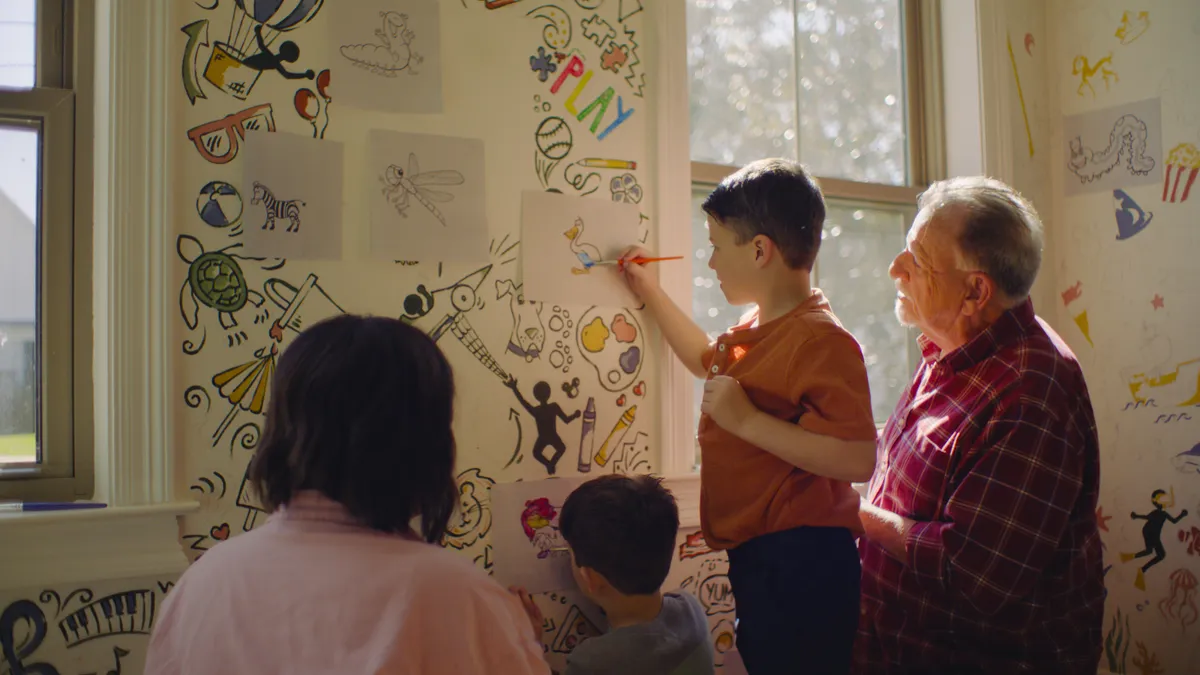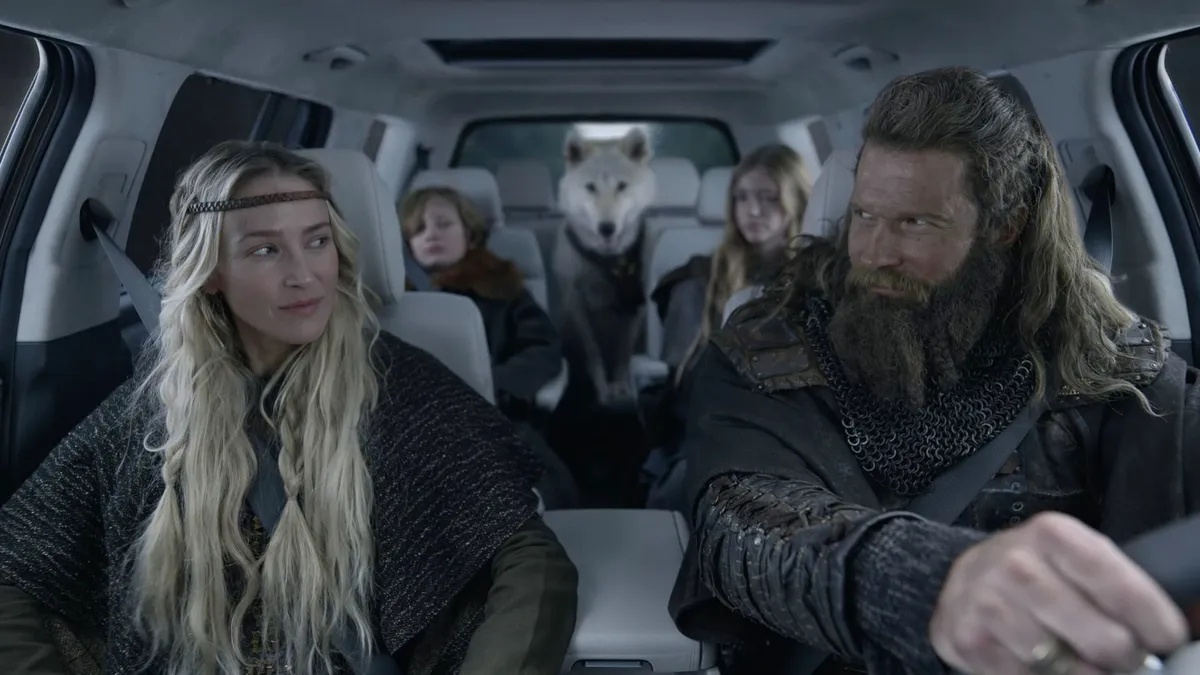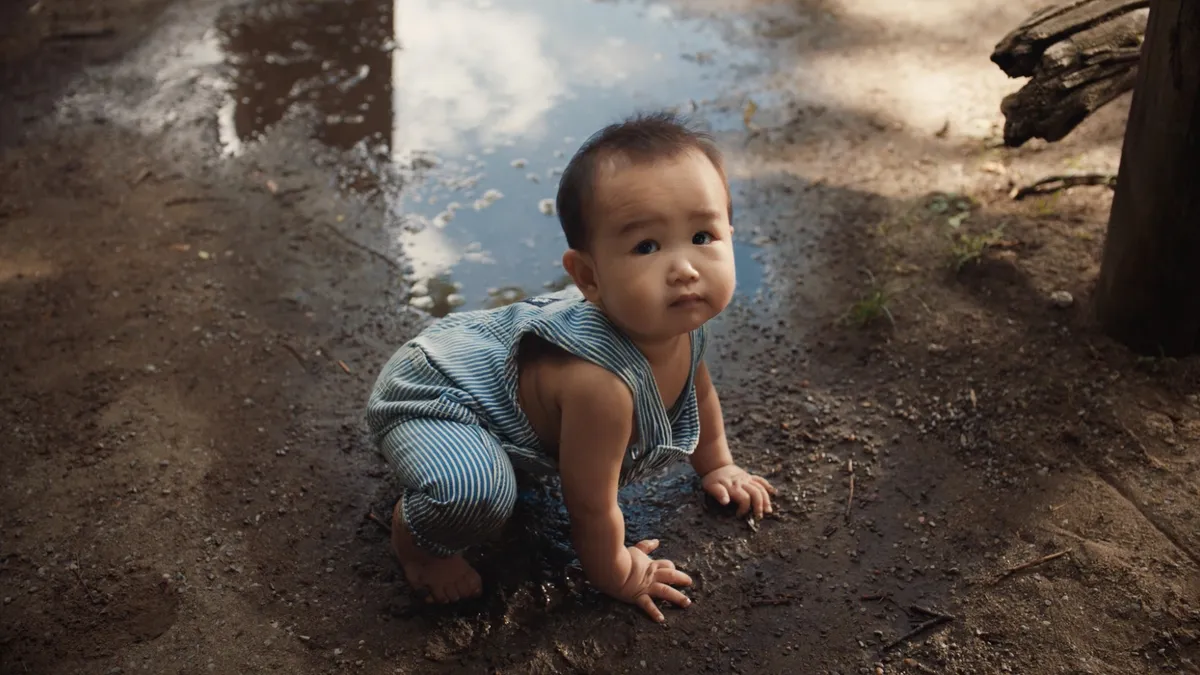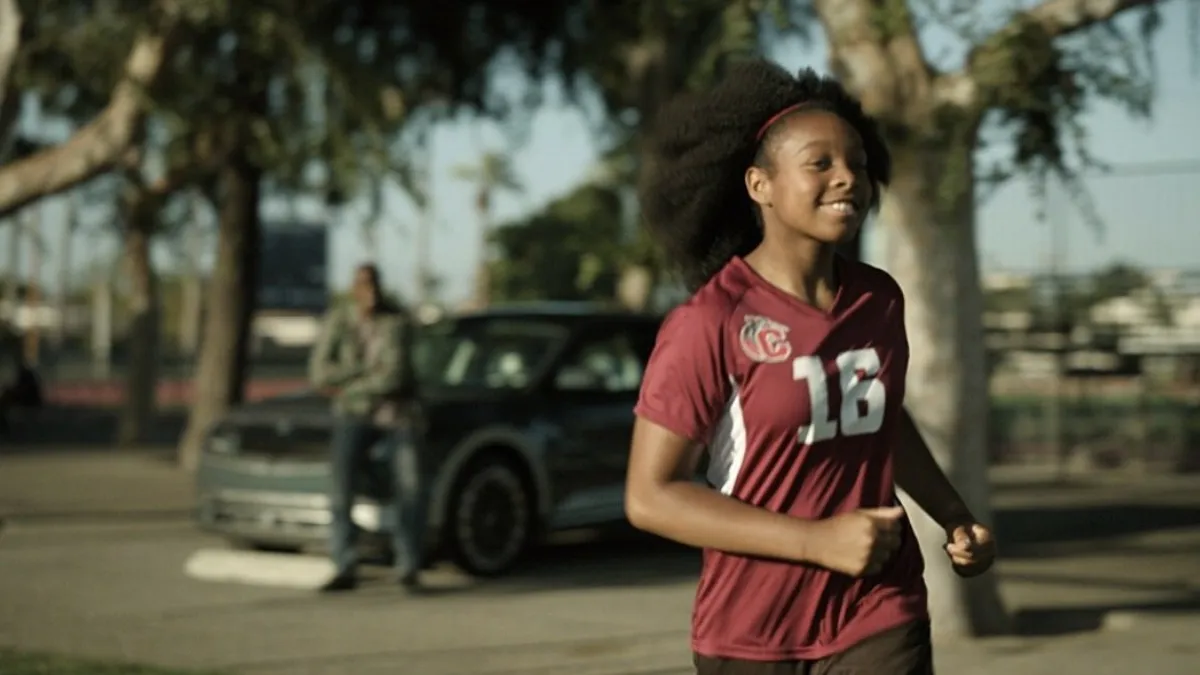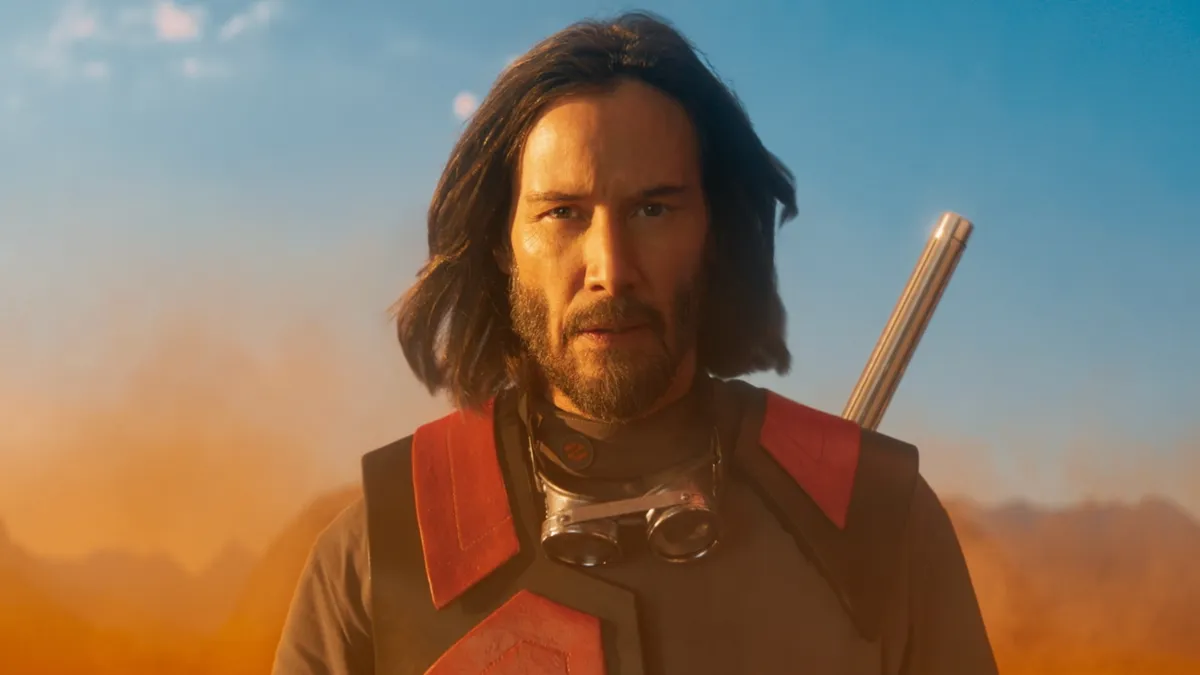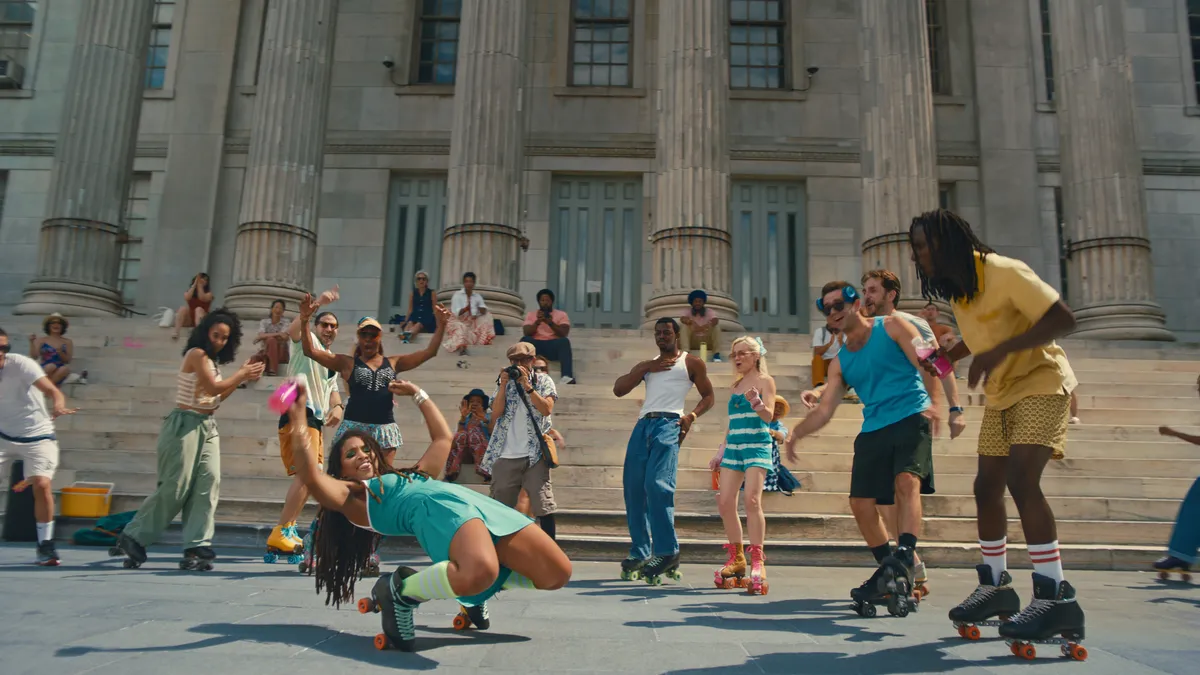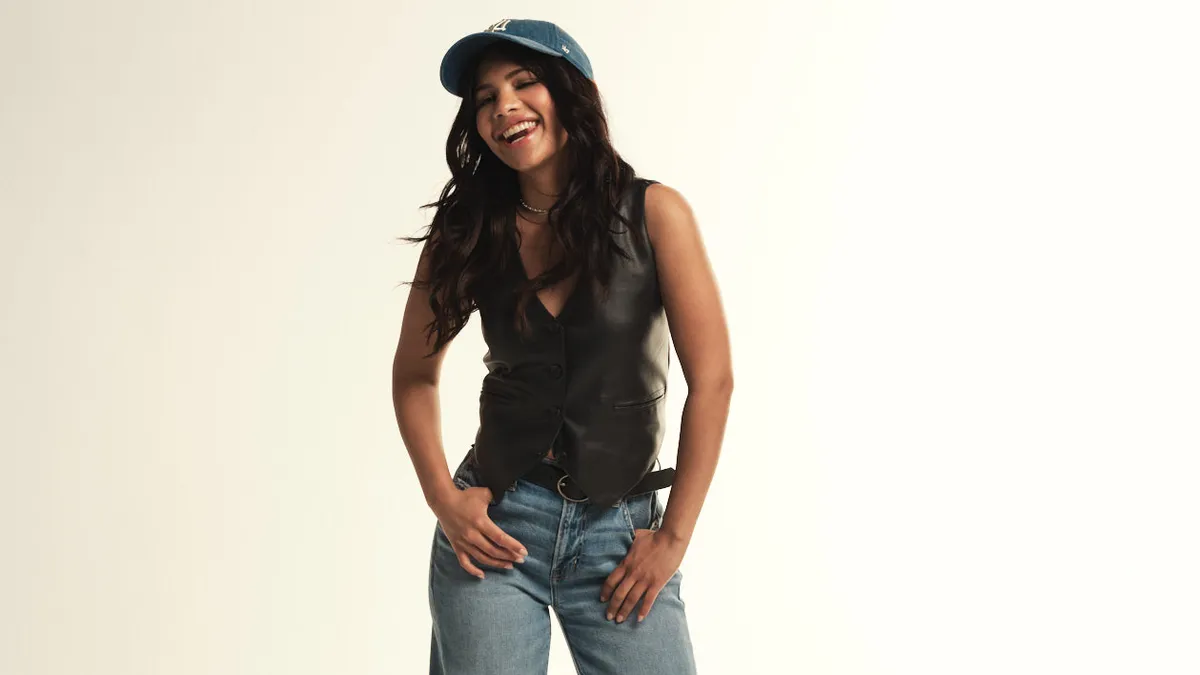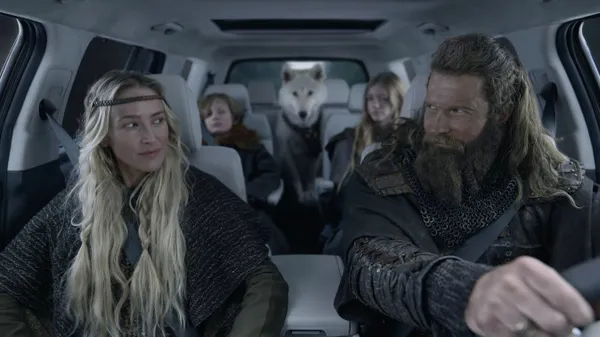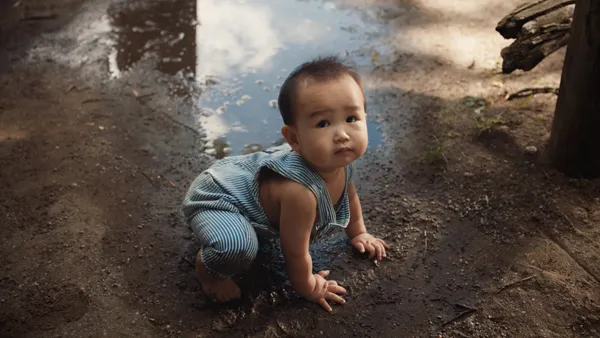Campaign Trail is our analysis of some of the best new creative efforts from the marketing world. View past columns in the archives here.
For generations, childhood has been marked — literally — by the contents of Crayola's iconic green and yellow boxes across countless drawings and doodles. For most people, the stacks of artwork generated during childhood are whittled down over time, shifting from refrigerator door to files that get smaller which each house move.
Unless your art was, as part of an effort Crayola started 40 years ago, collected by the company, displayed in museums and galleries around the country and eventually archived by the art supply brand. Crayola has opened the vaults for the "Campaign for Creativity," an initiative that is focused on reminding consumers about the power and importance of childhood creativity, in all its forms.
At the heart of the campaign is "Stay Creative," a tear-jerking short film that runs over six minutes and reunites three adults with the art they made in childhood and shows how creativity has played a role in their lives and helped them connect to others, whether parents, children or teachers. Telling those stories served as a great way for Crayola to connect with a broad audience of parents.
"We talked about the story, like the Ghost of Christmas Past, where we take parents back and make them viscerally feel what it felt like to be back in childhood doing artwork like that, and remember what it felt like to have people in your life nurturing that creativity," said Brian Eden, executive creative director at Dentsu Creative.
The Campaign for Creativity was created in partnership with Dentsu Creative, with Dentsu X driving strategy and utilizing the holding company's One Dentsu model. The social and digital campaign has driven over 2 million views of the full anthem.
A conversation about creativity
The Crayola crayon was first introduced over 120 years ago, giving the brand an unparalleled relationship with generations of consumers as a tool for childhood creativity. But to reach modern consumers, the marketer wanted to find a way to elevate the conversation around creativity and become more of a partner for parents, especially in an increasingly fraught world. Crayola partnered with the Ad Council Research Institute and investigated parents' attitudes, beliefs and behaviors.
"What we learned was that parents absolutely value creativity, but there is an opportunity to reinforce and fill in knowledge gaps related as to the 'why,' and then there's a real opportunity to double down on the 'how,'" said Victoria Lozano, executive vice president for marketing at Crayola.
From that insight, Crayola wanted to create a message and campaign that could start a conversation and move the needle on how society talks about creativity and nurtures it for kids on an everyday basis. Crayola's agency partners at Dentsu sought to remind parents of their own childhoods to remind them that barriers to creativity can be overcome.
"Creativity doesn't have to be this big planned out, mapped out thing," Eden said. "Even just playing a game of I Spy between the front of the grocery store and the back of the car — that's nurturing creativity in your kids. There are creative moments that are spontaneous and small, everywhere, if you're paying attention and watching out for it."
Filming real reactions
Crayola and Dentsu found plenty of small, touching moments of creativity and connection while filming and producing "Stay Creative." The team found people who had participated in Crayola's art program over the years, filming their daily lives before sharing the original art that had been in the archives for decades.
"The people that we found that were featured in the film did not know what the film was about until pretty late into the process," Lozano said. "It was not until the art was revealed to them that they knew it was [about] Crayola. A lot of the responses that you see are so incredibly authentic and genuine."
The creativity in the short film isn't always drawing and painting with Crayola products: sometimes its cooking with family, or jumping on a trampoline covered in balloons. The children who made the art didn't necessarily become artists; one is a surgeon who must be creative in the operating room. The wide range of experiences underscores Crayola's message.
"The important part is that creativity and creative self-expression enables you to build these critical life skills," Lozano continued. "It's about those core skills that you can apply in whatever you end up doing in life. We felt it was a very powerful way to engage and inspire many, many parents."
"Stay Creative" is the first phase of the campaign. Crayola is now leveraging social media to find more people whose art is in its archive so they can eventually tell their stories; the brand has already connected with two additional people.
"The more of these stories that we're able to uncover, the more we're going to be able to dimensionalize what creativity actually means over the course of our life," Eden said.
The campaign, like several other recent efforts by other marketers, also look to draw a line in the sand between human creativity and the outputs of artificial intelligence algorithms. Today's children are digital natives and are likely to interface with even more technology in the future. For Crayola, the campaign is about balancing the two.
"Technology is hugely enabling in a lot of different ways, but I think the trick is not to let it replace innate, human creativity," Lozano said. "We just want to be able to do our part and help spread the message.”



